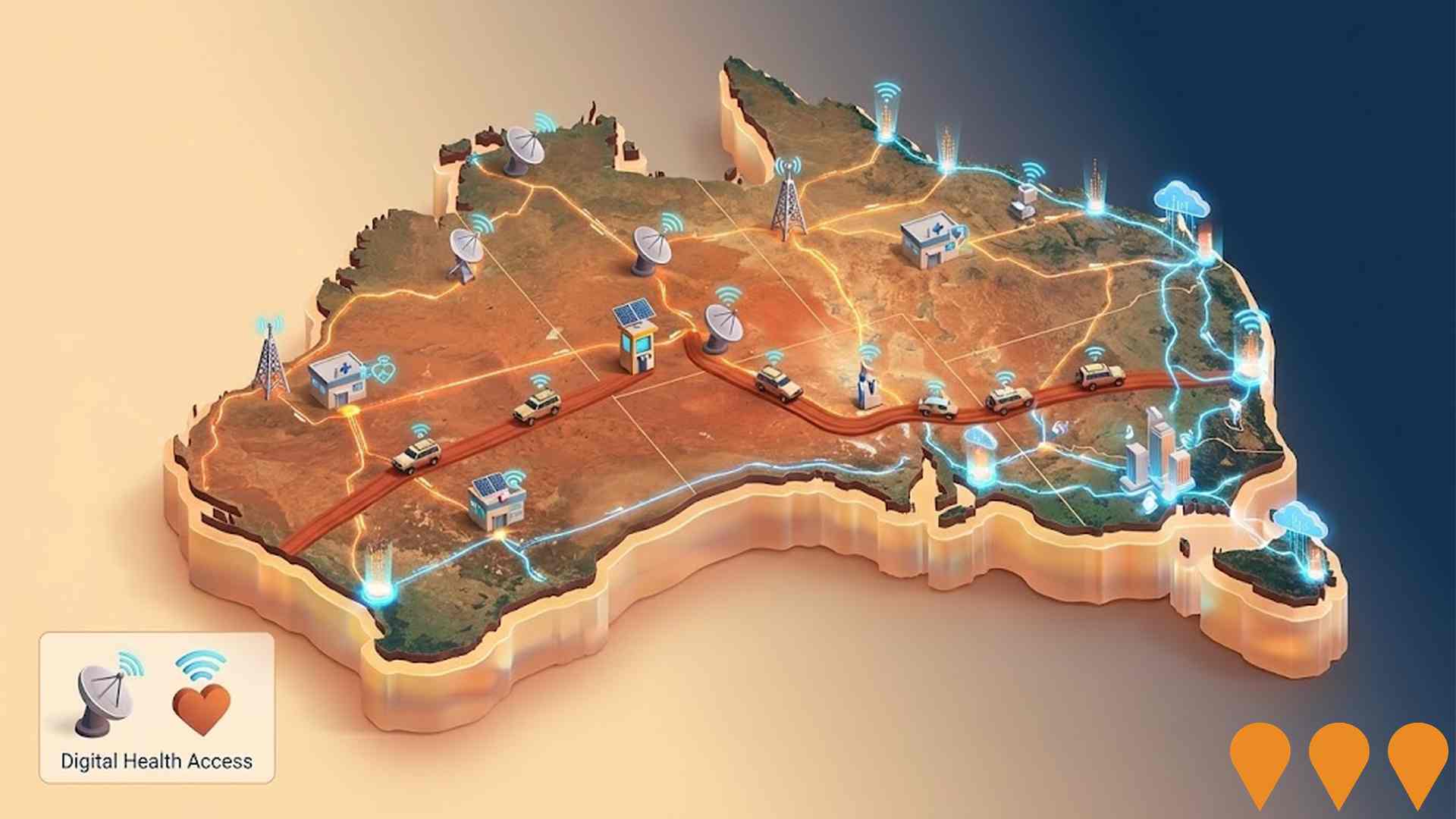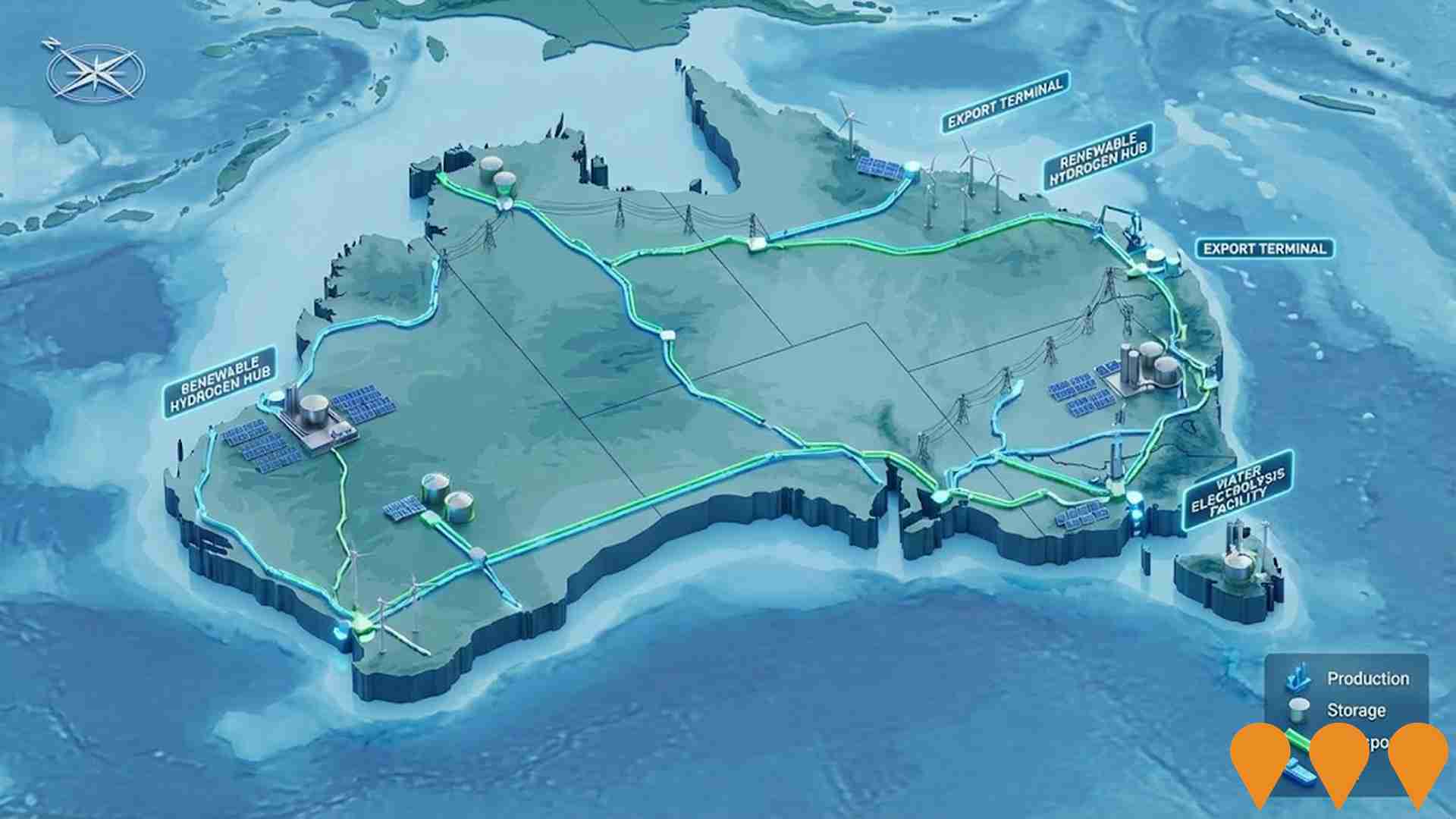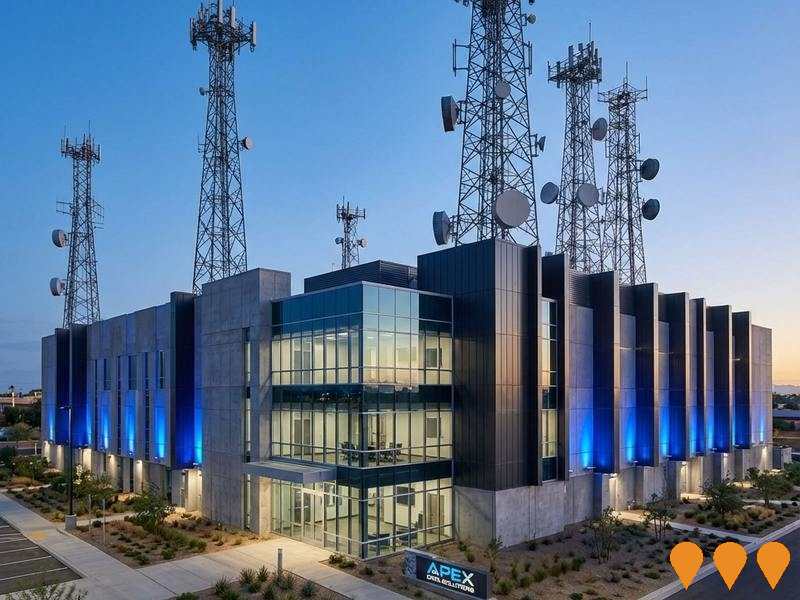Chart Color Schemes
est. as @ -- *
ABS ERP | -- people | --
2021 Census | -- people
Sales Activity
Curious about local property values? Filter the chart to assess the volume and appreciation (including resales) trends and regional comparisons, or scroll to the map below view this information at an individual property level.
Find a Recent Sale
Sales Detail
Population
Thamarrurr is positioned among the lower quartile of areas assessed nationally for population growth based on AreaSearch's assessment of recent, and medium term trends
Thamarrurr's population was approximately 2,446 as of August 2025. This figure represents a rise of 328 individuals (15.5%) since the 2021 Census, which reported a population of 2,118 people. The increase is inferred from the estimated resident population of 2,442 in June 2024 and address validation since the Census date. This results in a density ratio of 0.70 persons per square kilometer. Thamarrurr's growth rate exceeded both national (8.6%) and state averages between 2021 and 2025, indicating significant population expansion during this period. Natural growth was the primary driver behind this increase.
AreaSearch uses ABS/Geoscience Australia projections for each SA2 area, released in 2024 with a base year of 2022. For areas not covered by these projections and post-2032 estimates, AreaSearch applies age cohort-specific growth rates provided by the ABS in their latest Greater Capital Region projections (released in 2023, based on 2022 data). According to current demographic trends, Thamarrurr's population is expected to increase by approximately 271 individuals to reach around 2,717 by 2041, an overall rise of about 10.9% over the seventeen-year period.
Frequently Asked Questions - Population
Development
The level of residential development activity in Thamarrurr is very low in comparison to the average area assessed nationally by AreaSearch
Development activity data is being compiled for this area.
Thamarrurr naturally has much lower development activity compared to Rest of NT. This activity level is similarly below national patterns.
Frequently Asked Questions - Development
Infrastructure
Thamarrurr has limited levels of nearby infrastructure activity, ranking in the 15thth percentile nationally
No infrastructure changes are anticipated in this area by AreaSearch. Key projects previously considered include East Kimberley Clean Energy Project, Australia-Asia PowerLink (AAPowerLink), Northern Territory Freight Rail And Logistics Capacity Improvements, and Network Optimisation Program - Rail.
Professional plan users can use the search below to filter and access additional projects.
INFRASTRUCTURE SEARCH
 Denotes AI-based impression for illustrative purposes only, not to be taken as definitive under any circumstances. Please follow links and conduct other investigations from the project's source for actual imagery. Developers and project owners wishing us to use original imagery please Contact Us and we will do so.
Denotes AI-based impression for illustrative purposes only, not to be taken as definitive under any circumstances. Please follow links and conduct other investigations from the project's source for actual imagery. Developers and project owners wishing us to use original imagery please Contact Us and we will do so.
Frequently Asked Questions - Infrastructure
Australia-Asia PowerLink (AAPowerLink)
The world's largest renewable energy infrastructure project, comprising a 17-20GW solar farm and 36-42GWh battery storage in the Barkly Region, connected via HVDC transmission to Darwin and Singapore. The project received Commonwealth environmental approval in August 2024. It aims to supply up to 4GW of green electricity to Darwin industrial customers and export power to Singapore.

Enabling Digital Health Services for Regional and Remote Australia
National initiative to expand and improve digital health access for people in regional and remote Australia. Focus areas include enabling telehealth and virtual care, upgrading clinical systems and connectivity, supporting secure information exchange, and building workforce capability in digital health, aligned with the Australian Government's Digital Health Blueprint and Action Plan 2023-2033.

Enabling Infrastructure for Hydrogen Production
Australia has completed the National Hydrogen Infrastructure Assessment (NHIA) to 2050 and refreshed its National Hydrogen Strategy (2024). The programmatic focus has shifted to planning and enabling infrastructure through measures such as ARENA's Hydrogen Headstart and the Hydrogen Production Tax Incentive (from April 2025). Round 2 of Hydrogen Headstart consultation occurred in 2025. Collectively these actions aim to coordinate investment in transport, storage, water and electricity inputs linked to Renewable Energy Zones and priority hubs, supporting large-scale renewable hydrogen production and future export supply chains.

National EV Charging Network (Highway Fast Charging)
Partnership between the Australian Government and NRMA to deliver a backbone EV fast charging network on national highways. Program funds and co-funds 117 DC fast charging sites at roughly 150 km intervals to connect all capital cities and regional routes, reducing range anxiety and supporting EV uptake.

Bulk Water Supply Security
Nationwide program led by the National Water Grid Authority to improve bulk water security and reliability for non-potable and productive uses. Activities include strategic planning, science and business cases, and funding of state and territory projects such as storages, pipelines, dam upgrades, recycled water and efficiency upgrades to build drought resilience and support regional communities, industry and the environment.

Network Optimisation Program - Roads
A national program concept focused on improving congestion and reliability on urban road networks by using low-cost operational measures and technology (e.g., signal timing, intersection treatments, incident management) to optimise existing capacity across major city corridors.

East Kimberley Clean Energy Project
The East Kimberley Clean Energy Project is a proposed green hydrogen and ammonia facility in East Kimberley, Western Australia. The project involves the development of approximately one gigawatt of solar PV, combined with approximately 20 megawatts of hydro energy from the existing Ord Hydro Power Plant at Lake Argyle, approximately 70 kilometres south of Kununurra. The hydro and solar energy would be used to produce approximately 40,000 to 50,000 tonnes per annum of hydrogen on nearby MG Corporation land. The renewable hydrogen would be transported by a 120 kilometre pipeline to Wyndham and is expected to produce 180,000 to 250,000 tonnes per annum of ammonia.

Northern Territory Freight Rail And Logistics Capacity Improvements
Improvements to the Darwin-Tarcoola rail line in the Northern Territory aim to support $38 billion in investments, 6,000+ jobs, and the export of resources and renewable energy by enhancing freight logistics.

Employment
Employment conditions in Thamarrurr face significant challenges, ranking among the bottom 10% of areas assessed nationally
Thamarrurr's workforce is balanced across white and blue-collar jobs, with significant representation in essential services sectors. Its unemployment rate was 27.7% as of June 2025.
In comparison to the rest of Northern Territory (NT), which had an unemployment rate of 5.9%, Thamarrurr's rate is 21.8% higher. Workforce participation in Thamarrurr lags behind NT, with a participation rate of 26.6% compared to NT's 50.7%. The dominant employment sectors among residents include education & training, public administration & safety, and other services. Education & training is particularly strong, with an employment share of 2.5 times the regional level.
However, accommodation & food services are under-represented, with only 1.7% of Thamarrurr's workforce compared to NT's 6.9%. The area appears to offer limited local employment opportunities, as indicated by the Census working population count versus resident population. Between June 2024 and June 2025, labour force levels decreased by 1.8%, while employment decreased by 3.8%, causing unemployment to rise by 1.4 percentage points. In contrast, NT recorded an employment decline of 1.7% and a marginal decrease in unemployment. Jobs and Skills Australia's national employment forecasts from May 2025 project national employment growth of 6.6% over five years and 13.7% over ten years. Applying these projections to Thamarrurr's employment mix suggests local growth of approximately 6.1% over five years and 13.0% over ten years, based on a simple weighting extrapolation for illustrative purposes.
Frequently Asked Questions - Employment
Income
Income metrics place the area in the bottom 10% of locations nationally according to AreaSearch analysis
Thamarrurr's median taxpayer income in financial year 2022 was $31,089, with an average of $41,499 according to postcode level ATO data aggregated by AreaSearch. This is below the national average. The Rest of NT had a median income of $51,655 and an average income of $61,577 in the same period. Based on Wage Price Index growth of 12.01% since financial year 2022, current estimates for Thamarrurr would be approximately $34,823 (median) and $46,483 (average) as of September 2025. According to the 2021 Census, household, family, and personal incomes in Thamarrurr all fall between the 0th and 1st percentiles nationally. The predominant income cohort spans 28.7% of locals (702 people) with incomes ranging from $0 to $399, unlike broader trends where 33.6% fall within the $1,500 - $2,999 range. Lower income households are prevalent, with 50.7% earning below $800 weekly, indicating affordability pressures for many residents. While housing costs are modest, with 94.0% of income retained, Thamarrurr's total disposable income ranks at the 3rd percentile nationally.
Frequently Asked Questions - Income
Housing
Thamarrurr is characterized by a predominantly suburban housing profile, with a higher proportion of rental properties than the broader region
The dwelling structure in Thamarrurr, as evaluated at the latest Census held on 28 August 2016, consisted of 75.7% houses and 24.2% other dwellings including semi-detached homes, apartments, and 'other' dwellings. This is compared to Non-Metro NT's structure which was 83.6% houses and 16.4% other dwellings. The level of home ownership in Thamarrurr at the time was 5.5%, with mortgaged dwellings at 0.0% and rented dwellings at 94.5%. The median monthly mortgage repayment in the area was $0, while the median weekly rent figure was recorded as $50. In comparison, Non-Metro NT had a median monthly mortgage repayment of $1,732 and a median weekly rent of $80. Nationally, Thamarrurr's mortgage repayments were significantly lower than the Australian average of $1,863, while rents were substantially below the national figure of $375.
Frequently Asked Questions - Housing
Household Composition
Thamarrurr features high concentrations of family households, with a higher-than-average median household size
Family households account for 87.1% of all households, including 50.4% couples with children, 13.8% couples without children, and 18.4% single parent families. Non-family households constitute the remaining 12.9%, with lone person households at 11.4% and group households comprising 3.0%. The median household size is 4.8 people, which is larger than the Rest of NT average of 3.5.
Frequently Asked Questions - Households
Local Schools & Education
Thamarrurr faces educational challenges, with performance metrics placing it in the bottom quartile of areas assessed nationally
The area faces educational challenges, with university qualification rates at 8.9%, significantly lower than Australia's average of 30.4%. This presents both a challenge and an opportunity for targeted educational initiatives. Bachelor degrees are the most prevalent at 5.8%, followed by postgraduate qualifications (2.1%) and graduate diplomas (1.0%). Vocational pathways account for 15.8% of qualifications among those aged 15+, with advanced diplomas at 4.0% and certificates at 11.8%.
Educational participation is high, with 32.6% of residents currently enrolled in formal education. This includes 19.0% in primary education, 8.7% in secondary education, and 1.3% pursuing tertiary education. Our Lady of the Sacred Heart Thamarrurr Catholic College provides local educational services within Thamarrurr, with an enrollment of 456 students as of 2021. The area demonstrates varied educational conditions across Thamarrurr, with all 1 schools offering integrated K-12 education for academic continuity. School capacity exceeds typical residential needs (18.6 places per 100 residents vs 13.7 regionally), indicating the area serves as an educational center for the broader region by 2021 data.
Frequently Asked Questions - Education
Schools Detail
Nearby Services & Amenities
Transport
No public transport data available for this catchment area.
Frequently Asked Questions - Transport
Transport Stops Detail
Health
Thamarrurr's residents boast exceedingly positive health performance metrics with very low prevalence of common health conditions across all age groups
Health outcomes data shows excellent results across Thamarrurr, with very low prevalence of common health conditions across all age groups. The rate of private health cover is extremely low at approximately 46% of the total population (~1,120 people), compared to the national average of 55.3%.
Heart disease and asthma are the most common medical conditions in the area, affecting 4.5 and 3.4% of residents respectively. A total of 86.9% of residents declare themselves completely clear of medical ailments, higher than the 78.5% across Rest of NT. The area has 4.1% of residents aged 65 and over (99 people), lower than the 9.4% in Rest of NT. Health outcomes among seniors are particularly strong, broadly in line with the general population's health profile.
Frequently Asked Questions - Health
Cultural Diversity
The level of cultural diversity witnessed in Thamarrurr was found to be above average when compared nationally for a number of language and cultural background related metrics
Thamarrurr's cultural diversity was above average with 2.4% of its population born overseas and 88.5% speaking a language other than English at home. Christianity was the main religion in Thamarrurr, comprising 52.2% of people. The 'Other' category made up 12.7%, higher than the Rest of NT average of 6.9%.
In ancestry, Australian Aboriginal comprised 84.9%, substantially higher than the regional average of 64.6%. Australians comprised 3.6%, notably lower than the regional average of 9.9%. English ancestry made up 3.6%, also notably lower than the regional average of 10.2%.
Frequently Asked Questions - Diversity
Age
Thamarrurr hosts a very young demographic, ranking in the bottom 10% of areas nationwide
Thamarrurr's median age is 27 years, which is significantly lower than Rest of NT's 31 years and Australia's 38 years. The age profile shows that those aged 15-24 are particularly prominent at 20.6%, while the 55-64 group is smaller at 7.3% compared to Rest of NT. This concentration of 15-24 year-olds is higher than the national average of 12.5%. Post-2021 Census data shows that the 35-44 age group grew from 14.8% to 16.8%, while the 55-64 cohort increased from 6.1% to 7.3%. Conversely, the 5-14 cohort declined from 19.7% to 17.0% and the 25-34 group dropped from 19.1% to 17.5%. By 2041, Thamarrurr is expected to see significant shifts in its age composition. The 45-54 group is projected to grow by 56%, reaching 407 people from 260. However, population declines are projected for the 85+ and 15-24 cohorts.

